of light and air
in which Sarah gets a little carried away with the pleasure of unexpected ideas
Well as you can see— I am glowing.
So, indeed, is everything I have been making.
Truly, your kindness and enthusiastic words about my first Gusset post leave me not only glowing, but almost at a loss for words. How to possibly express my delight at this comradely feeling of unfolding possibility?
Luckily (at least for me cuz I do love writing these missives and can’t tell you how grand it is to be back at it), ‘almost’ is the operative word here— for the oddball materials that somehow chose me years ago, materials that continue find me again and again no matter my state of mind, have no such issues. “Never apologize for being a supposedly sad wad of cellulose fiber that appears to have already done its job,” declares one coffee filter after another.

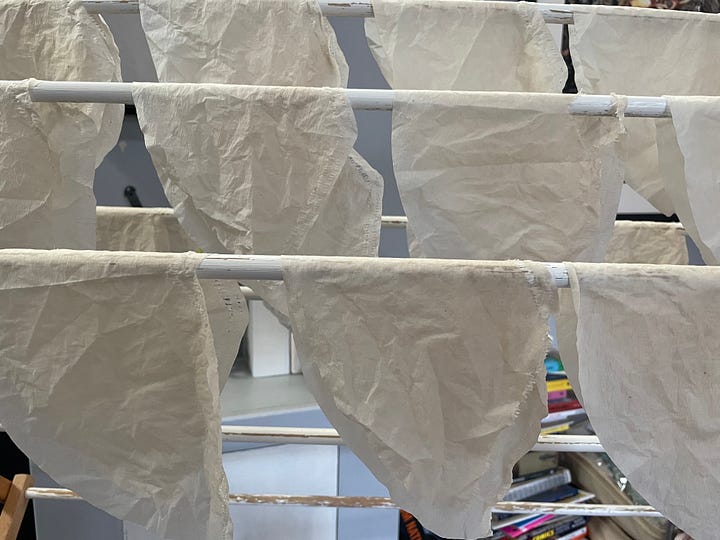
“We— that’s you and me together, touching and being touched—have colors to absorb, meditations to weave, words to dance with, and delight to share.”



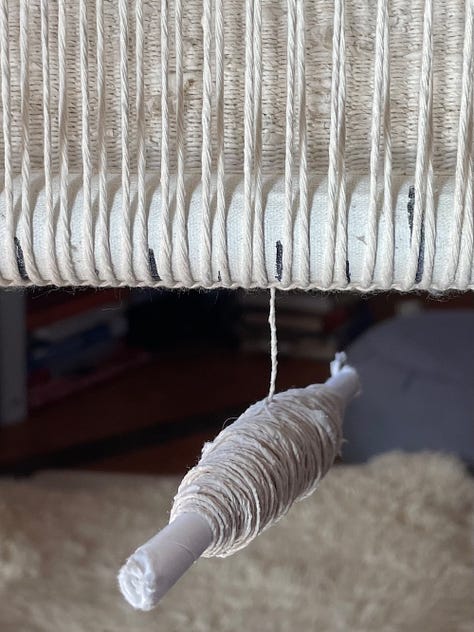


“Also—um— Sarah? We’ve noticed that you’re consistently soothed by a minute or two or twenty of careful curve-cutting, and in our opinion that is a fine thing for everyone.”


They are not wrong. Honestly, even after over four years (just noticed that I first started messing with used coffee filters in the fall of 2018, knit with them for the first time in June of 2019 and made my first attempt at 3D vessel knitting in February and March of 20201), I’m ever soothed by the sound and feel of scissors snipping this particular paper.
Indeed, in the past months and years there were times when it seemed that cutting and twisting coffee filters then slowly tapping them into warp in the simplest of patterns was the only thing that made consistent sense, the haptic pleasure and the soothing repetition of textured geometry and stable, emotion-absorbing weft faced plain weave, the perfect spirit-tending work.



It was quite a surprise a couple of weeks ago then, when the paper suddenly suggested something else—a forgotten three dimensional form so gauzy and open that the light could slide in and pour out, all the while casting shadows in every direction. It was like the paper knew before I did that it was time to come out of hibernation and, well, let the words pour out as well.
And who, as my mother often said, can resist an unexpected creative surprise? Can you?
Luckily I’m finally knitting again after over two years of refraining due to hand pain (endless diligent exercises and stretches have really helped, as has technique modification and a minimalist approach in that I try stop before it hurts instead of after), so I was able to cast on.
And now I’ve knit ten. Or maybe eleven? Most are paper, but willow bark, dogbane and milkweed cordage have also wanted to show their stuff, and I have to say I find the fibers look simply glorious in these forms.
The structure I’m using is based on a pattern I wrote years ago called Square Bags that Look Round,2 the vessel bottoms beginning with a single stitch and building into a bias square as with my Sweater Somewhat Slanted.3 Then you pick up stitches around the edge and knit in the round for as long as you like, increasing and decreasing as you see fit. Stuffed with something to form and hold its shape, the stretched fibers can then be coated with starch or sizing.
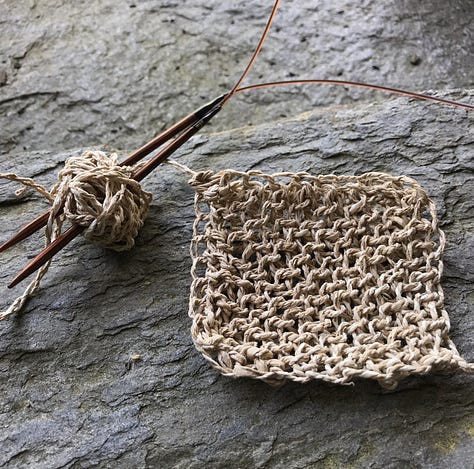


So far I’ve shaped them with plastic bags, a single plastic bag stuffed with roving, a single plastic bag stuffed with fleece, and balloons. Each knitting material demands something different. The one just below for instance, knit with 2-ply dress pattern tissue yarn, loved the balloon.
The one below that however, knit with dogbane cordage, much preferred a thin plastic bag stuffed with fleece. (I tried first with a balloon but on removal it collapsed too suddenly and the super delicate walls of the vessel came with it; the plastic bag I could ease off, a bit at at time).
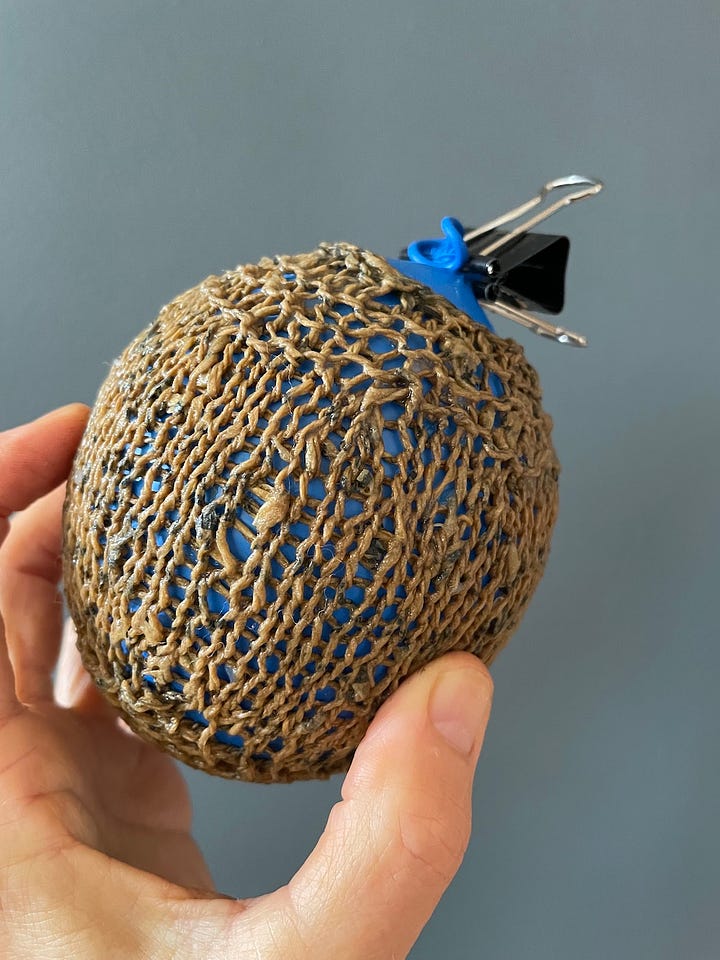



Xanthan gum was what I used for starch in my first 2020 vessels, but I didn’t much like working with it. Luckily other experiments with hand made glues and fabric stiffeners (about which I’ll talk another time), led me to rice flour paste, so that was my first choice here. Essentially like cooked flour paper maché paste, it is made with a bit of mochiko cooked in a double boiler (or jar in a pot of simmering water), until thick and creamily translucent. I like it a lot, but it is a bit chalky when dry, so also tried potato starch. Again, a small amount of potato starch is cooked as above for 15-20 minutes. Lots and lots of stirring is required for both. It is hard to be specific in the measurement department but I think I began with a couple of tablespoons of the dry ingredients, 3-4 times as much water, adding more water as needed as the paste thickens-- enough so the final glop is both absorbable and spreadable. I have questions about the differences between these two -- and it is at times like this that can hardly believe I can't go in the other room and ask my smart theoretical chemist husband what's going on on the molecular level -- long chain protein polymers doing their thing (or not) for long term stability-- but fate has decreed otherwise. Do you know???? If so please leave a comment below as I'd much appreciate understanding, at least at a very simple level, what is going on--and why. In the meantime, I'll learn by doing as much as I can (you should see my new skills in the cooking department after 30+ years of being cooked for). There are also some other starches and stiffeners on my "what if" list, both for these and other paper ideas, but I have zero experience with them so far.4
Another semi-familiar material that I haven't yet tried on the paper is gelatin, though it is is what I used the first time I messed around with sizing during early experiments with a backstrap loom. At the time I was nervous about using hand spun wool singles for warp (also tried xanthan gum5)
Both were definitely helpful back then, though ultimately I chose not to use either, as I grew more confident both spinning and weaving with fine wool warp (in part because I switched entirely from using a wheel to a super fast spindle which for me means more control over twist—but that, too, is a story for another day).
I was, however, thinking about that time of sizing a couple of days ago as I stood in the cold, clear, rare February sun hanging those backstrap strip blankets out to air— blankets I now sleep under every night (yes, a great heap of them)— and it came to me that back then I was using sizing at the beginning of a process to help make flexible tactile cloth that would drape and flow in the breeze —comforting translucent fabric whose sinuous undulations would adapt to their surroundings, all the while creating light and shadow by the very nature of their flexibility.

And this time I’m using sizing at the end of the process to create gossamer beings that create light and shadow by the very nature of their ability to remain wide open and support themselves without reshaping their form to whatever they are on or next to,.
Both are containers of light and air, both exude and generate haptic joy in their making, and while so different in form and function, both are sources of continual pleasure.
I’m not actually super great at pleasure —at least not great with the kind of things often assumed to be sources thereof: chocolate, parties, travel, eating out, drinking wine (though I’ve become quite a fan of whiskey these last months —a tablespoon or two over an ice cube—who knew!?), but this —the great tactile mystery of elemental materials, of working with them (often unsuccessfully), to see what will happen, and now getting to talk with you about all of it—well this is simply splendid.
This— is —fun. And I thank you again for giving me yet another reason to notice and revel in it.
And now, finally I will stop, as I need to eat breakfast and also Substack says I’ve gone on too long for all this to be contained in an email so you might have to click on something or read it in your browser, for which I apologize. I will try to embrace brevity in the future. But today —thank you so much for reading this far; my gratitude for your company is boundless.
First paper vessel blog post links: First Knitting 2019 and Vessels 2020. There are many more —even a blog post label about coffee filter yarn—but you can explore that on your own cuz how long does a person want a footnote to be?
Square Bags that Look Round; p. 111 all new Homespun Handknit by Amy Clarke Moore; Interweave Press 2009. Also on Ravelry
Sweater Somewhat Slanted: available on my website and Ravelry
Washi Arts, a store in Washington State USA devoted to fine Japanese papers, has this amazing and informative page on starch , so if you’re into exploring this stuff, I think it’d be a great place to start though as I said, I’ve not tried them myself
Sizing blog post links, put down here so as not to interrupt the flow above: wool singles experiments and xanthan gum.









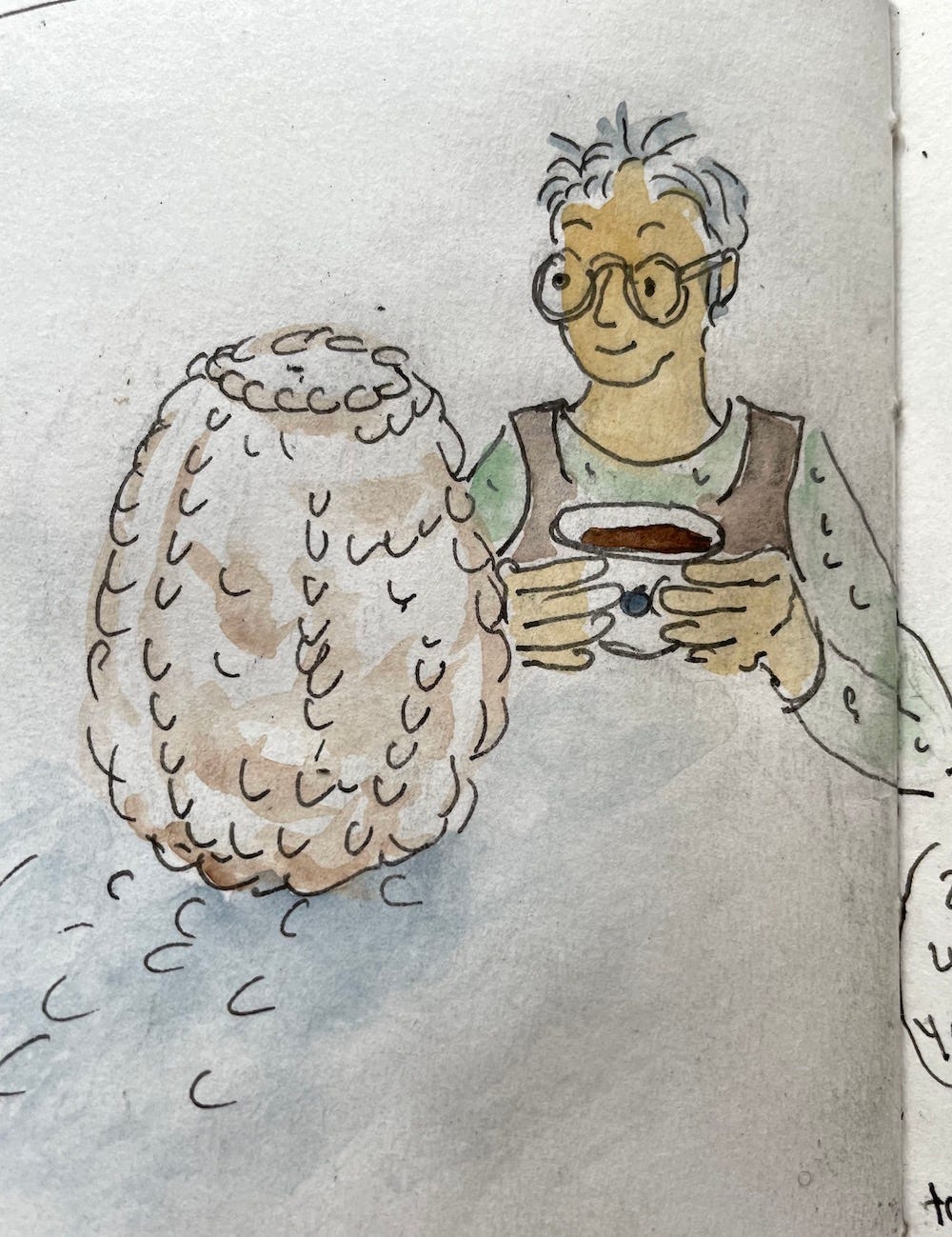
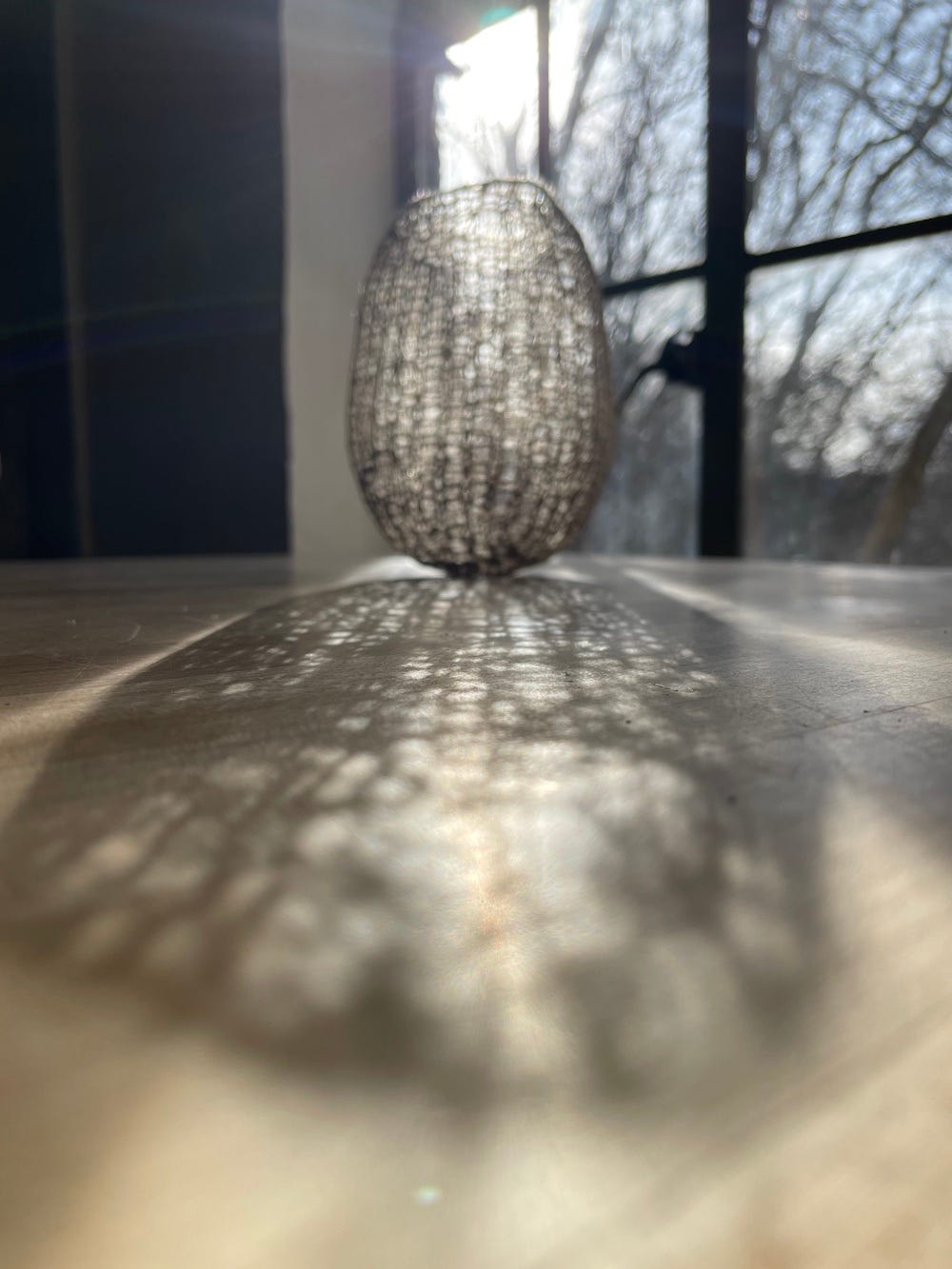
The perfect mix of pictures and words. Loved reading it!
What joy in finding your hands know things your head forgot…